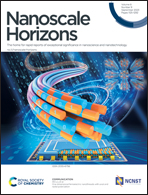Pt single atoms meet metal–organic frameworks to enhance electrocatalytic hydrogen evolution activity†
Abstract
The electrochemical hydrogen evolution reaction (HER) effectively produces clean, renewable, and sustainable hydrogen; however, the development of efficient electrocatalysts is required to reduce the high energy barrier of the HER. Herein, we report two excellent single-atom (SA)/metal–organic framework (MOF) composite electrocatalysts (PtSA-MIL100(Fe) and PtSA-MIL101(Cr)) for HER. The obtained PtSA-MIL100(Fe) and PtSA-MIL101(Cr) electrocatalysts exhibit overpotentials of 60 and 61 mV at 10 mA cm−2, respectively, which are close to that of commercial Pt/C (38 mV); they exhibit overpotentials of 310 and 288 mV at 200 mA cm−2, respectively, which are comparable to that of commercial Pt/C (270 mV). Theoretical simulations reveal that Pt SAs modulate the electronic structures of the MOFs, leading to the optimization of the binding strength for H* and significant enhancement of the HER activity. This study describes a novel strategy for preparing desirable HER electrocatalysts based on the synergy between SAs and MIL-series MOFs. Using MIL-series MOFs to support SAs could be valuable for future catalyst design.



 Please wait while we load your content...
Please wait while we load your content...